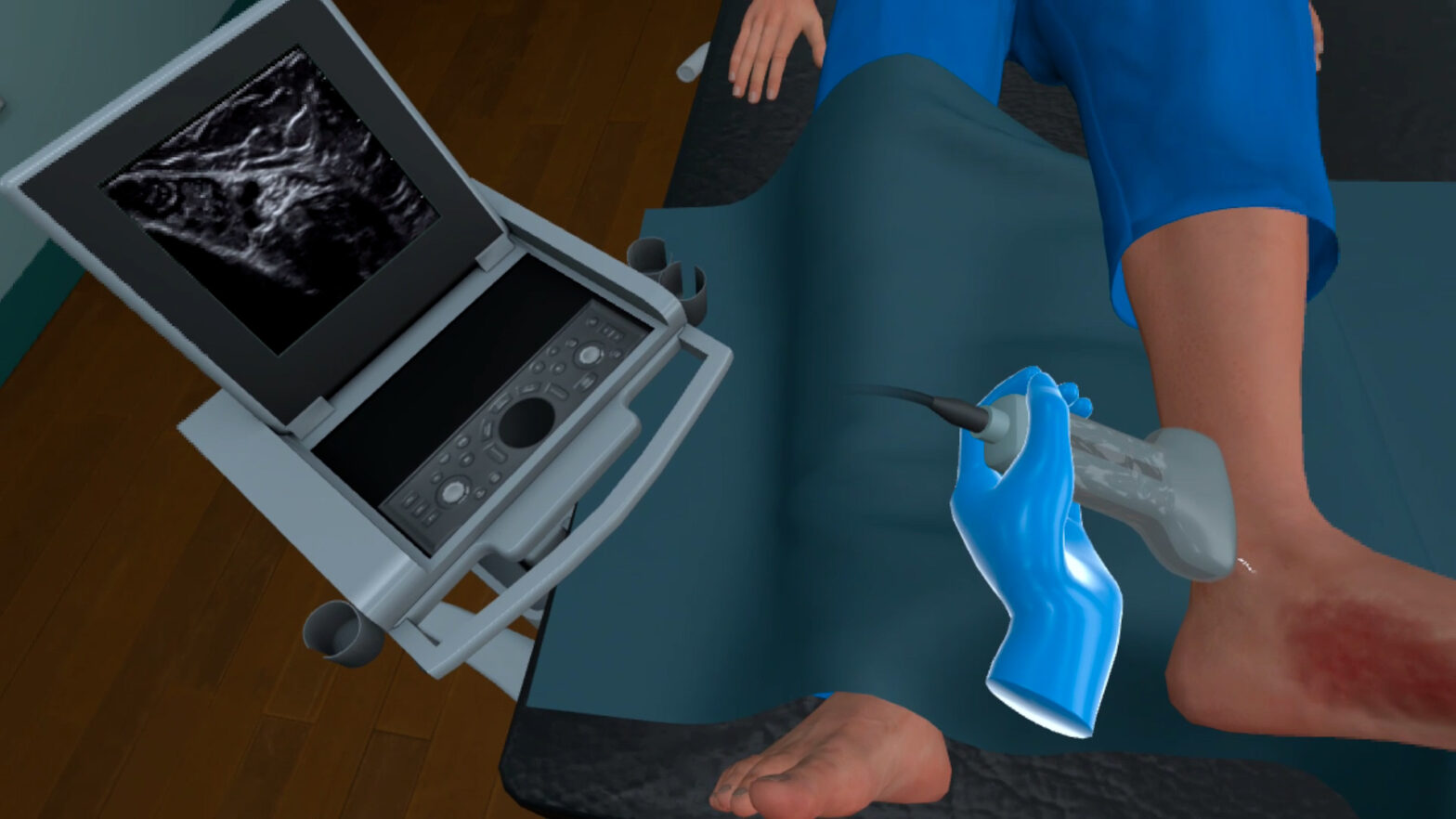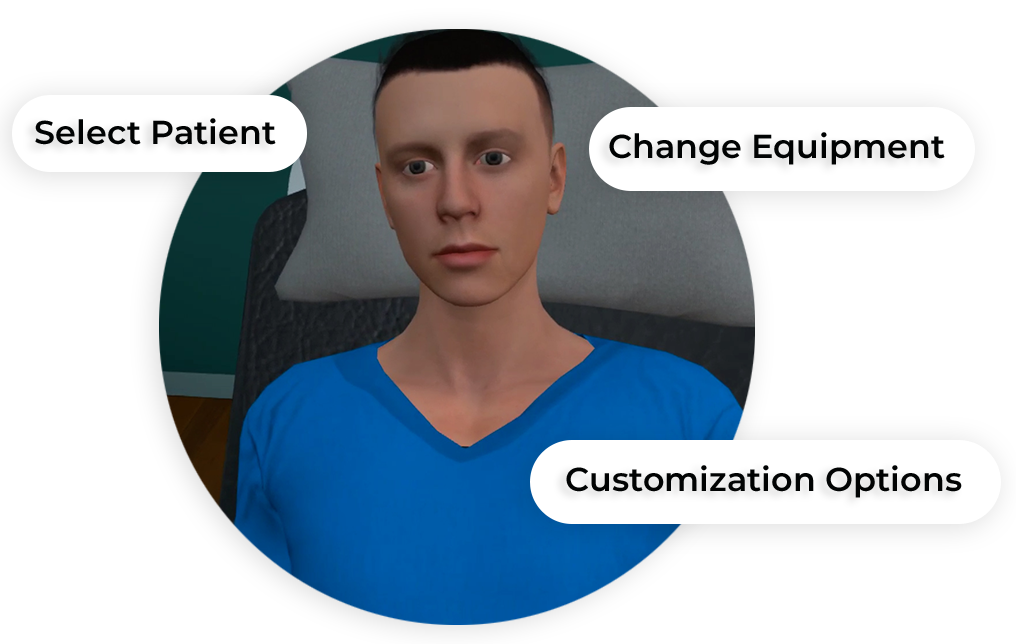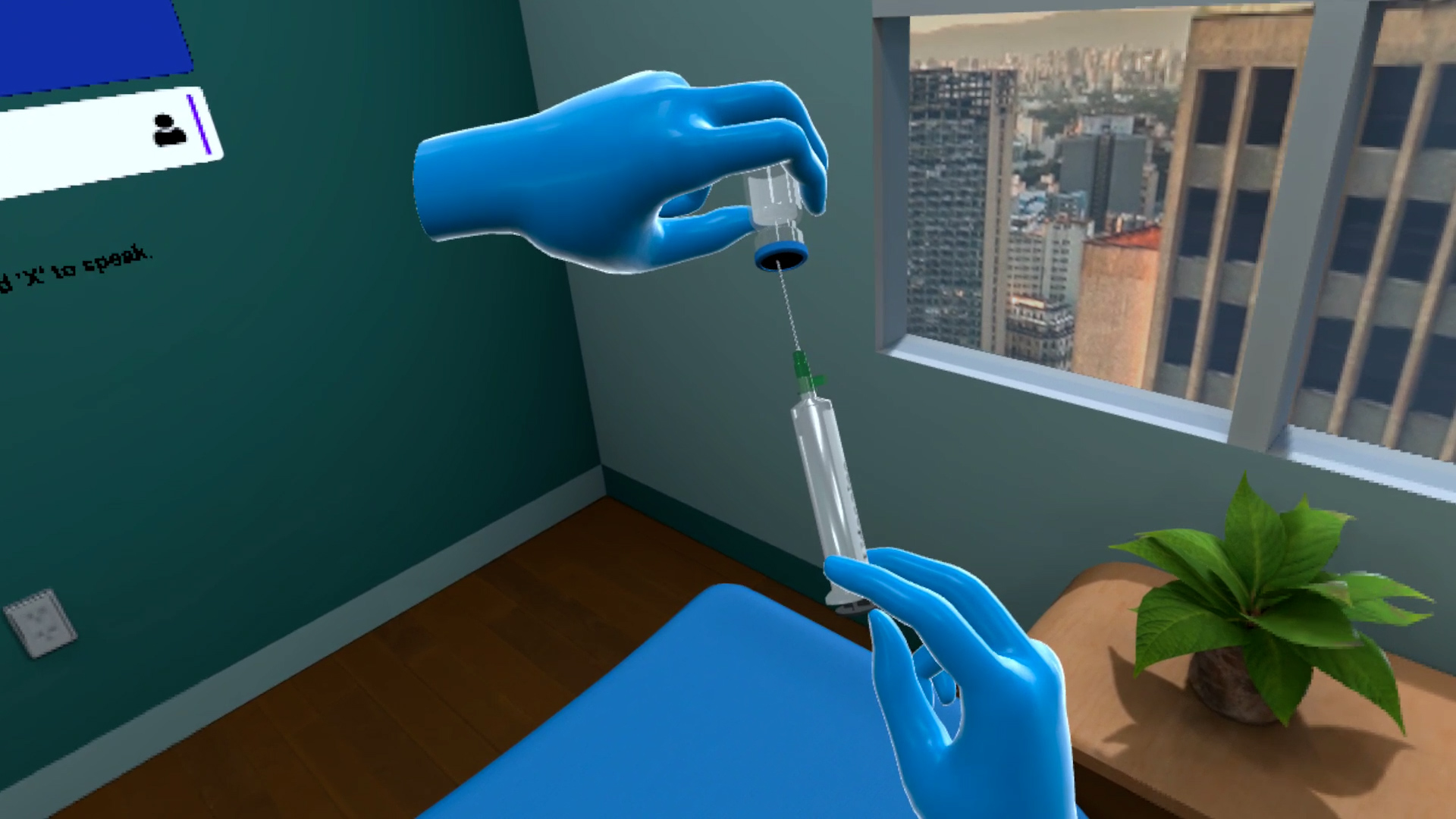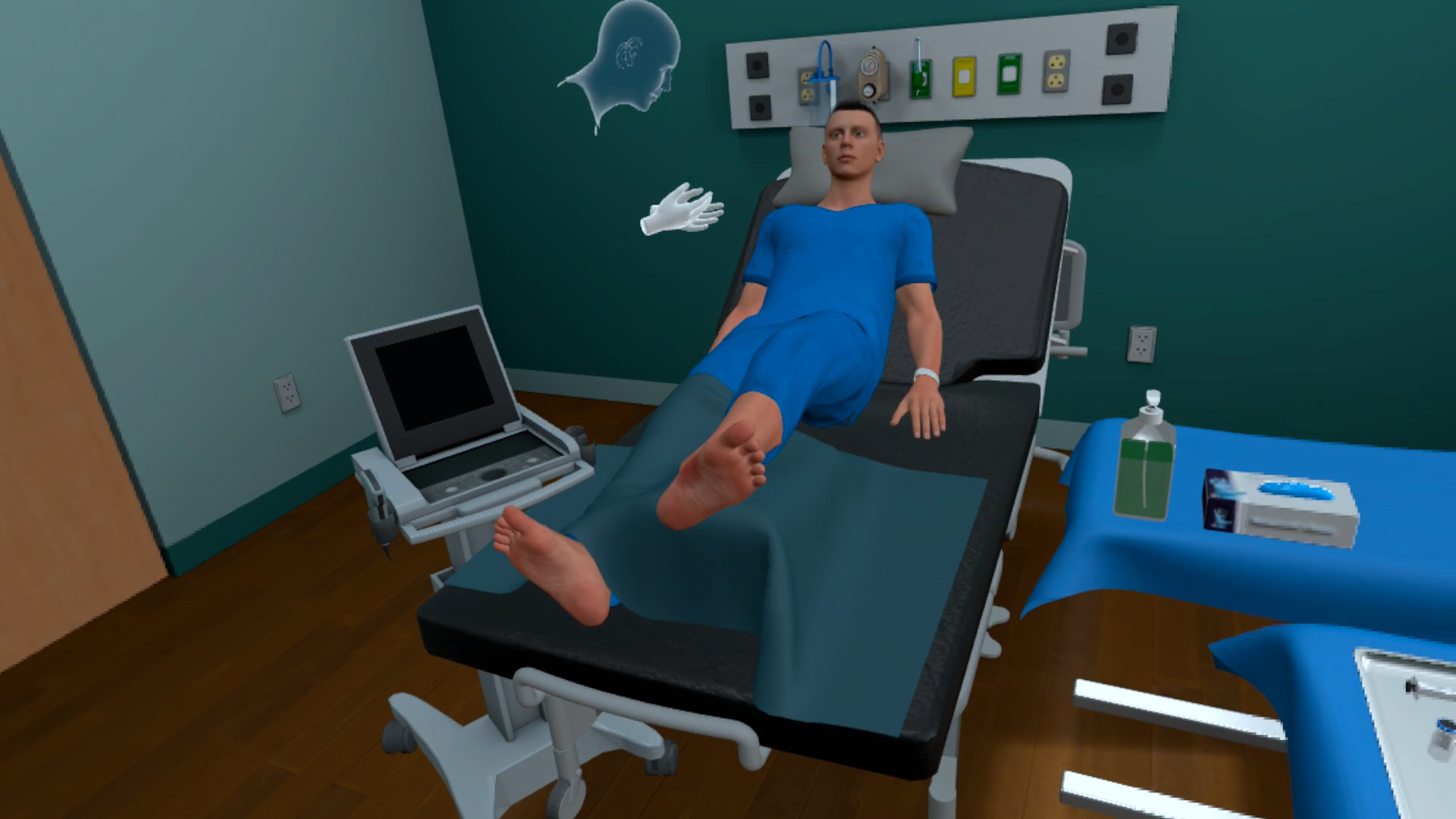Posterior Tibial Nerve Block
Twenty-eight year old Ethan Cole is presented with a large laceration to the bottom of the left foot. To facilitate effective and pain-free repair of the injury, a posterior tibial nerve block is indicated.
This VR simulation for Posterior Tibial Nerve Block is designed to provide practitioners practice in performing the procedure in a virtual environment with a virtual patient. With both training and assessment modes, learners can perform the procedure and assess themselves on their performance.
- Identifying the posterior tibial artery and nerve using ultrasound with precise visualization
- Preparing and administering lidocaine following approved protocols

- American Society of Regional Anesthesia and Pain Medicine.
Customize Your Program
Get rid of the editor. Adopt in-VR customization.
MedVR Education is bringing to you in-VR customization that will enable you to customize your procedural simulations by making selections from a range of feature choices.
- Select patient from a diverse background
- Choose preferred virtual environment
- Select equipment used in the procedure
- Modify difficulty level of the assessment mode
- …..many more to come

 Multi-playerSessions
Multi-playerSessions Physics-based Interactions
Physics-based Interactions
Core Skills Training

Performing Posterior Tibial Nerve Block
In this Posterior Tibial Nerve Block procedure, learners will start by verifying the patient’s name and date of birth, obtaining consent for the procedure, and performing hand sanitization. They will then proceed to palpate the posterior tibial pulse and conduct an ultrasound to locate the posterior tibial artery and nerve. Once the posterior tibial artery and nerve are visualized, learners will inject a few cc’s of lidocaine, following clinically approved methods to ensure accuracy and safety. All necessary affordances are provided to complete the procedure with efficiency.
Training
With prompts, guidance and affordances learners are hand-held through the process to practice the procedure in a virtual environment with a virtual patient.
- Photorealistic virtual environment
- Physics-based interactions
- Detailed instructions
- Adequate affordances to assist in task completion

Assessment
Test acquired skills to perform the procedures from start to finish without prompts. An incorrect step will take the learner back to the start to start afresh.
- Live scoring
- Instant feedback
- Adequate affordances for efficient performance
- Time tracking to monitor activity completion







